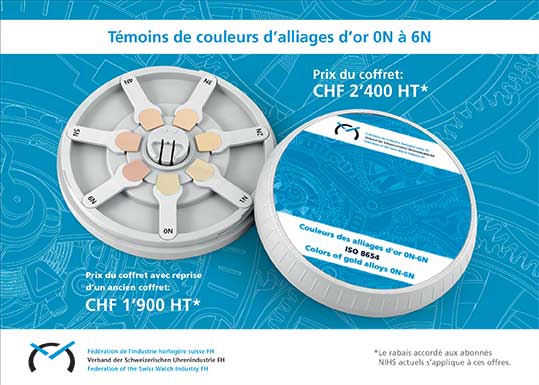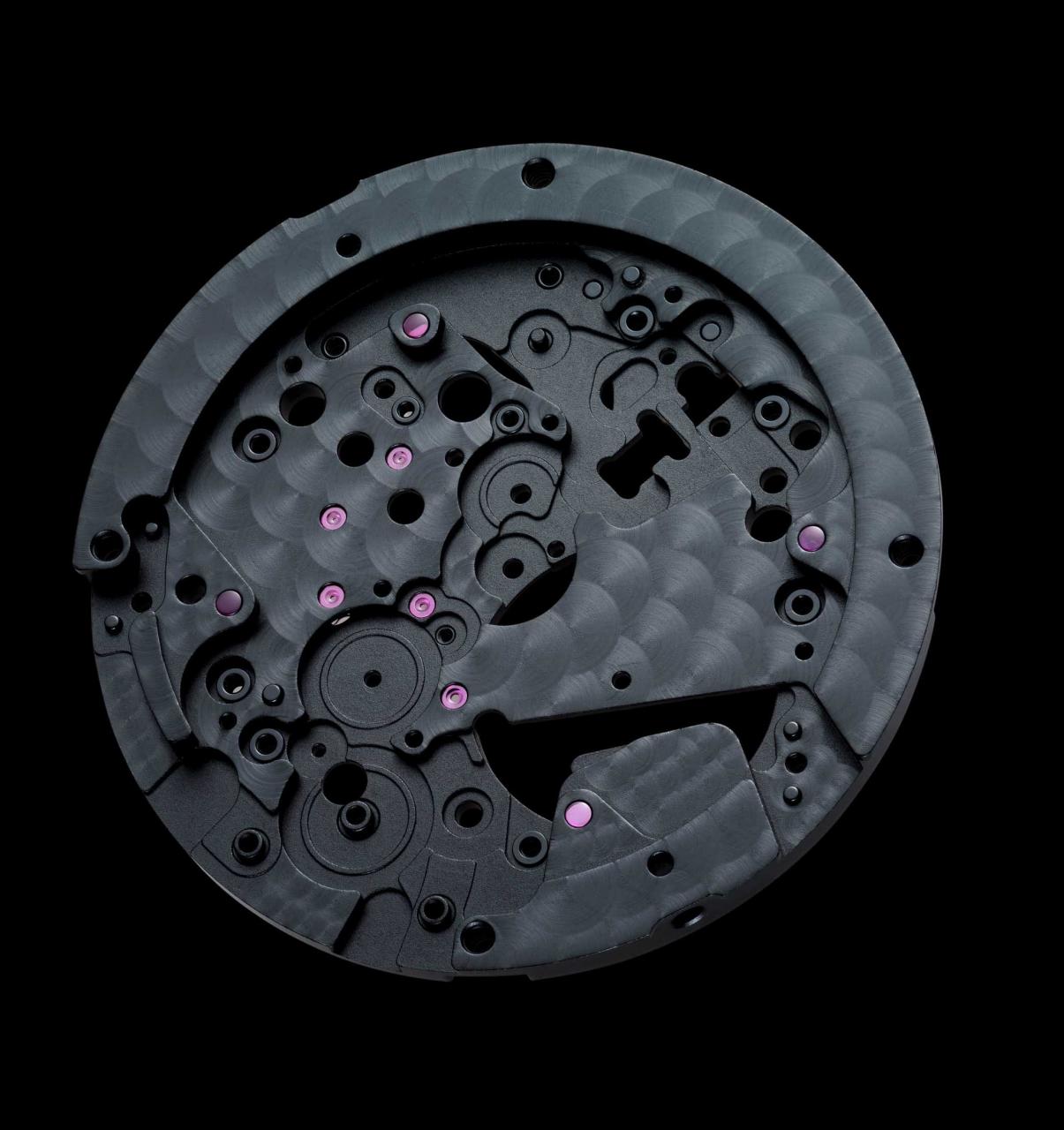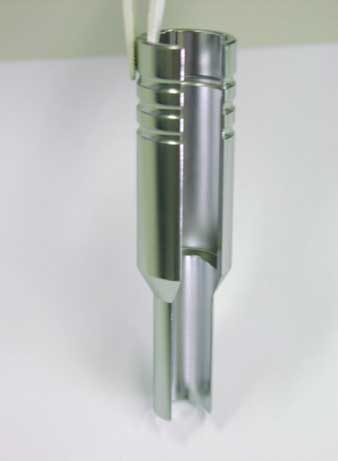Mechanical wristwatches have been around for over a century and have survived the major threats posed by quartz watches and LCD technology in the 1970s and 1980s to rebound in even better health, at least as far as luxury Swiss watches are concerned. The industry has faced a renewed threat from smartwatches over the past couple of years, one that it first dismissed, then embraced. Rather than trying to second-guess the technological advances in movements over the coming years, this article takes a look at some things that could have an impact on design trends in the watch industry over the next 12 months. Find out how, among other things, Baume & Mercier is pioneering the watchmaking trends of tomorrow.
A new gold alloy colour
You may be familiar with the classifications of 0N to 5N for gold alloys, which are based on the ISO 8654 standard “Colours of gold alloys – Definition, range of colours and designation”. Watchmakers use a number of different gold alloys and some of them have developed their own gold alloys – keen to differentiate themselves from their competitors. Nevertheless, in terms of their classification, all of them fall within the 4N or 5N colour categories, which broadly speaking cover the spectrum of yellow and red (or rose) gold.

The FH (Swiss watchmaking industry federation) is already selling a colour panel that includes the new 6N gold colour FH
By the end of 2017, however, the ISO 8654 standard will be revised to add a new colour – 6N, or dark red. The main objective of this revision to the standard is to allow measurement of the colour in the LAB space used by spectrocolorimetres to measure and compare gold alloys. So when will we see the first watches in dark-red gold?
Source: Revue FH No. 11, 29 June 2017
Black movement treatments
Up until five years ago, you could get a black movement treatment using a galvanising bath of black ruthenium. But the European Regulation on Registration, Evaluation, Authorisation and Restriction of Chemicals (REACH), which maintains a list of harmful chemical substances that are banned from use in the European Union, included one of the molecules used in this treatment on its list.
Frankly, I just liked these design cues because they mix up the style of a rectangular opinion. Sure it would be easy to generate a thin rectangular situation, slap a flat crystal onto it, and call it a day. Together with the Baume & Mercier Hampton, you really do have that appearance when viewed from straight on, however when seen at any type of angle, you see the design work they put into the watch to make it stand out.Tucked into the situation (and viewable through the caseback) is a 4 Hz automatic movement, which of course, drives the three palms and the date screen down at 6 o’clock. While I do generally like seeing a date display on a watch (especially one that is likely to view daily wear duty, not worn just on special events), it feels as though it may be a bit of a miss. Together with the numerals after the right edges of the case and maintaining things well-balanced, the date window just feels slightly off-kilter, both in terms of positioning and sizing. These two aspects are, of course, restricted with a date wheel (round) in a situation of this particular shape. It can just be me, but I think the general design would be better served by deleting the date complication. And, while we’re at it, the “automatic” text: they do this to distinguish it in the quartz model, but it seems to just be a distraction on the dial.What should not be altered, however, is the handset. For starters, we have a three-hander here, and I enjoy having another hands on the movement to let me know the watch is alive. Next up, lets talk dimensions on the sword-shaped hands on. On a rectangular case, it can be complicated to find the lengths right so they don’t appear to crowd the brief side of the dial or have dropped on the lengthy side. On the Baume & Mercier Hampton, they did a wonderful job of balancing the two, while maintaining the palms in proportion to one another. Last, let’s discuss the bluing.

A movement with the new black NAC coating STS/Acrotec
Coating specialist STS, a company the Acrotec group – a major player in the important subcontracting industry – first considered replacing the offensive molecule with another to achieve the black colour, but the results were unacceptable. It therefore decided to develop its existing anthracite NAC coating. After three years of development, the new coating has passed ageing and corrosion tests and the black NAC coating is ready for industrialisation. STS is considering patenting it. It is also working on a further development of the process that would allow it to be used for more demanding applications, where the surface is prone to more wear, such as the watch case itself. Look out for deep black movement coatings in the near future.
Source: SSC Bulletin 83, June 2017
A brighter polish for titanium cases?
The traditional method for polishing watch cases is mechanical, using brushes and abrasive powders with decreasing particle size to grind away surface imperfections on the metal. CERN, which is most famous as the home of the Large Hadron Collider but also one of the world’s leading scientific research institutes (and is just a stone’s throw from some of the big watch factories in Meyrin), has developed an electropolishing process that can work down to the nanometre level and create a mirror-polished appearance.

Titanium polished with the CERN electropolishing process CERN
Similar to galvanic treatments, CERN’s electropolishing process uses a chemical bath containing an electrolyte that is stimulated by an electric current. A mixture of current density, the viscosity and resistivity of the electrolyte, temperature and treatment time all combine to dissolve microscopic particles of the metal to leave a smoother surface on which, unlike with mechanical polishing, no direction lines are visible. CERN, through its knowledge transfer activities, is currently offering licences for the technology and we wait to see if the watch industry takes up this opportunity.
Source: SSC Bulletin 83, June 2017
Something fishy with your watch strap?
Could fish skin be the next big thing in watch straps? After calf, cow, crocodile, alligator, python, ray, rabbit and shark, the skin of the rainbow trout is the latest animal to be used to attach a watch to the wrist. Baume & Mercier presented Banka troutskin straps at the SIHH this year. The scales on the fish, which are reared in eco-friendly conditions on the Banka farm in the south of France (the water in their ponds in oxygenated naturally, their diet is adapted to the weather and the fish are not given any antibiotics or vaccines), add a unique structure to the skin during the tanning process. The delight of many a renowned chef now finds a second use as a luxury accessory.

The idyllic Banka farm that breeds trout in a sustainable and species-friendly manner Baume & Mercier
